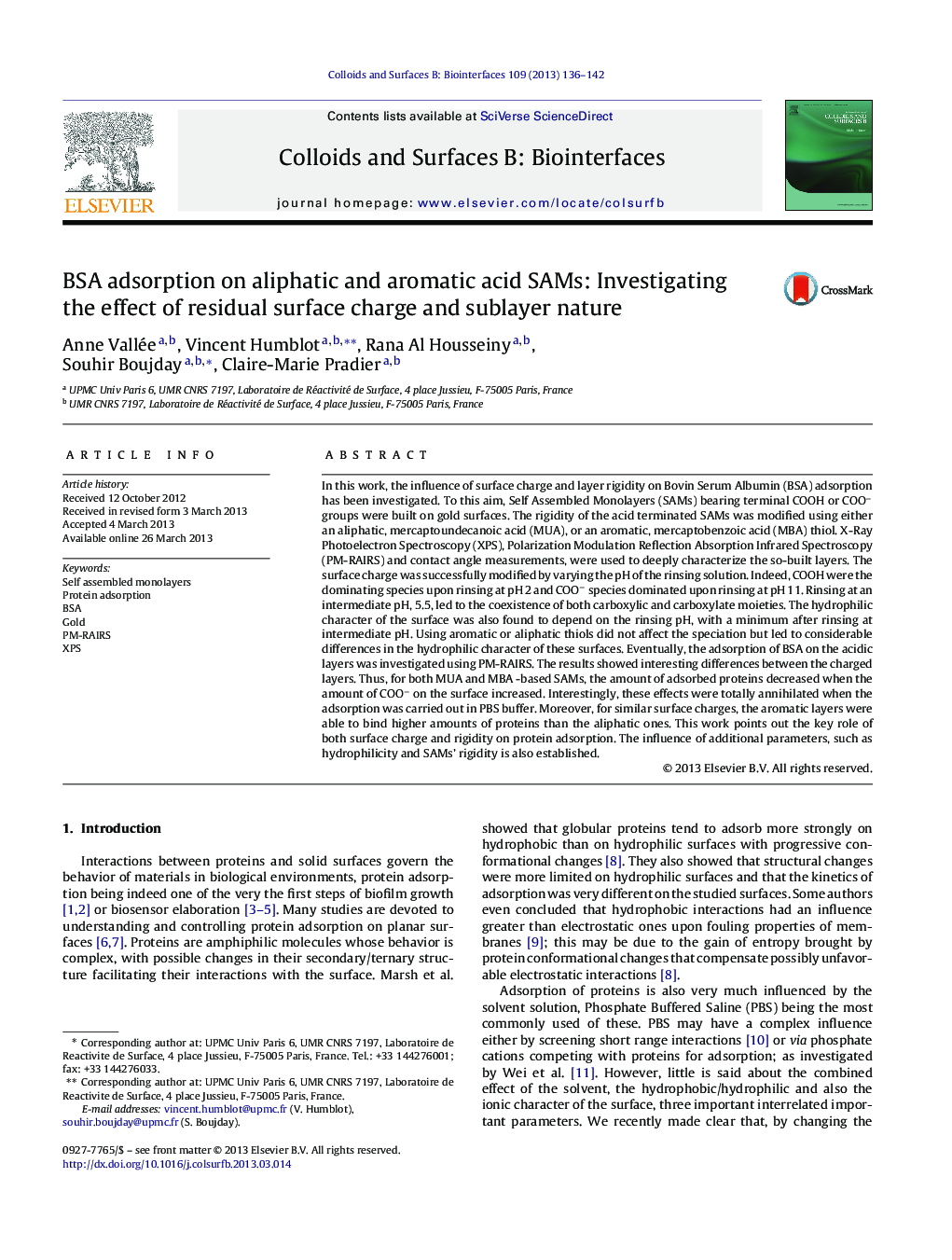| Article ID | Journal | Published Year | Pages | File Type |
|---|---|---|---|---|
| 600088 | Colloids and Surfaces B: Biointerfaces | 2013 | 7 Pages |
•Comparison of aliphatic and aromatic self assembled monolayers of acidthiols on gold.•XPS, PM-RAIRS and contact angle characterization of SAMs bearing different charges.•Influence of residual charge of SAMs on BSA adsorption.•Correlation of SAMs order and hydrophilicity to protein adsorption.
In this work, the influence of surface charge and layer rigidity on Bovin Serum Albumin (BSA) adsorption has been investigated. To this aim, Self Assembled Monolayers (SAMs) bearing terminal COOH or COO− groups were built on gold surfaces. The rigidity of the acid terminated SAMs was modified using either an aliphatic, mercaptoundecanoic acid (MUA), or an aromatic, mercaptobenzoic acid (MBA) thiol. X-Ray Photoelectron Spectroscopy (XPS), Polarization Modulation Reflection Absorption Infrared Spectroscopy (PM-RAIRS) and contact angle measurements, were used to deeply characterize the so-built layers. The surface charge was successfully modified by varying the pH of the rinsing solution. Indeed, COOH were the dominating species upon rinsing at pH 2 and COO− species dominated upon rinsing at pH 11. Rinsing at an intermediate pH, 5.5, led to the coexistence of both carboxylic and carboxylate moieties. The hydrophilic character of the surface was also found to depend on the rinsing pH, with a minimum after rinsing at intermediate pH. Using aromatic or aliphatic thiols did not affect the speciation but led to considerable differences in the hydrophilic character of these surfaces. Eventually, the adsorption of BSA on the acidic layers was investigated using PM-RAIRS. The results showed interesting differences between the charged layers. Thus, for both MUA and MBA -based SAMs, the amount of adsorbed proteins decreased when the amount of COO− on the surface increased. Interestingly, these effects were totally annihilated when the adsorption was carried out in PBS buffer. Moreover, for similar surface charges, the aromatic layers were able to bind higher amounts of proteins than the aliphatic ones. This work points out the key role of both surface charge and rigidity on protein adsorption. The influence of additional parameters, such as hydrophilicity and SAMs’ rigidity is also established.
Graphical abstractFigure optionsDownload full-size imageDownload as PowerPoint slide
